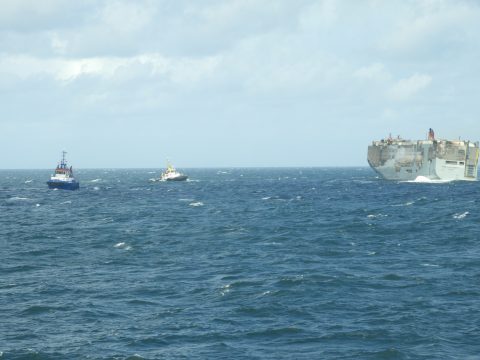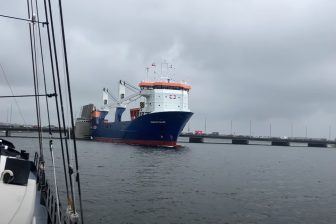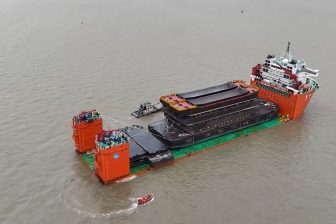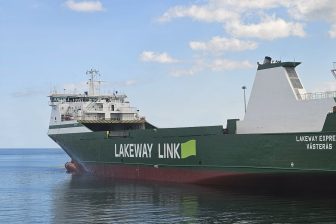
Burning Fremantle Highway towed to a new location
The fire-stricken car carrier Fremantle Highway has arrived at a new location, according to the new information from the authorities. Rijskwaterstaat, Dutch directorate general for public works and water management coordinated the tow of the vessel, that has been on fire since midnight on July 25, to a new location.
In an attempt to avert any environmental disaster, the vessel was towed slowly and in a controlled manner by two tugs to a temporary location, 16 kilometres north of Schiermonnikoog and Ameland. During towing, the ship’s stability was continuously monitored, among other things.
In its latest update of the situation, Rijkswaterstaat added that the 66 km journey was completed even faster that anticipated due to cooperating current. Plans going forward are to anchor Fremantle Highway, and for a team from the salvage partners to go onboard and carry out an inspection.
The final port remains unknown, and the decision depends on the expected weather conditions and the required and available port facilities.
Rijkswaterstaat’s oil control vessel Arca will also remain nearby. Other ships from Rijkswaterstaat and Germany are also available on call should oil pollution occur.
Temperature drop aboard Fremantle Highway
The vessel, that was on its way from Bremen to Singapore, was moving almost 3800 cars, with 498 electric vehicles on board, a K Line spokesperson told the German news agency DPA. While the reason for the fire is yet unknown, it is widely speculated that it could be one of the EVs onboard.
RoRo operators have voiced their concern over transporting EVs and the risk of fires onboard vessels. Such incidents can have catastrophic consequences due to the fact that Li-ion batteries generate extreme heat in the case of malfunction.
This heat can quickly spread to nearby combustible materials, causing a rapid fire that’s challenging to extinguish.
Rijkswaterstaat has over the weekend informed that the temperature onboard the burning Fremantle Highway dropped sharply, with the fire intensity and smoke subsiding, allowing for immediate action from the salvage companies. The salvage vessel Multrasalvor 4 enabled salvage crew to board the vessel and establish a new reinforced towage connection.
The inspection has showed that the vessel is stable currently and intact below the waterline. The second connection provides for more control and ensures safe towing operation. Since the establishment of the second connection to the vessel, the salvage crew disembarked.
Towing started on July 30
Towing on the Fremantle Highway started on July 30 in the early afternoon. The vessel was towed slowly and in a controlled manner (approximately 3 knots, 5.5 km/h) by two tugs.
The tugboats also maintain a connection with the Fremantle Highway at the new, temporary location. The ship is therefore also kept under control at the new location. Surrounding ships and the coastguard aircraft continue to monitor the situation on location.
De #FremantleHighway is onderweg naar de tijdelijke locatie. Het schip moet waarschijnlijk nog 33 km afleggen om deze plek te bereiken. Blijf ons op X volgen voor updates. Onze nieuwsfeed ligt er momenteel even uit. pic.twitter.com/2rqzRYbtQX
— Rijkswaterstaat (@Rijkswaterstaat) July 31, 2023
Fatal incident
To remind, one crew member died and several other were injured as fire broke out on Fremantle Highway PCTC sailing in the North Sea, some 27 kilometres north of Ameland, The Netherlands. The Dutch Kustwacht (Coast Guard) received a distress call around midnight.
Crew members were taken to Lauwersoog and to Groningen Airport Eelde where they were looked after by the paramedics.
The vessel also posed an environmental risk as it was close to the vulnerable Wadden Sea area. Wadden Sea has been added to the UNESCO World Heritage List and the Wadden Association noted that the salvage approach aims to bring the vessel as far away from the region as possible.
Throughout the whole salvage operation, including the current towing of Fremantle Highway, Rijkswaterstaat’s oil control vessel Arca remains nearby. Other ships from Rijkswaterstaat and Germany are also available on call should oil pollution occur.
You just read one of our premium articles free of charge
Register now to keep reading premium articles.




